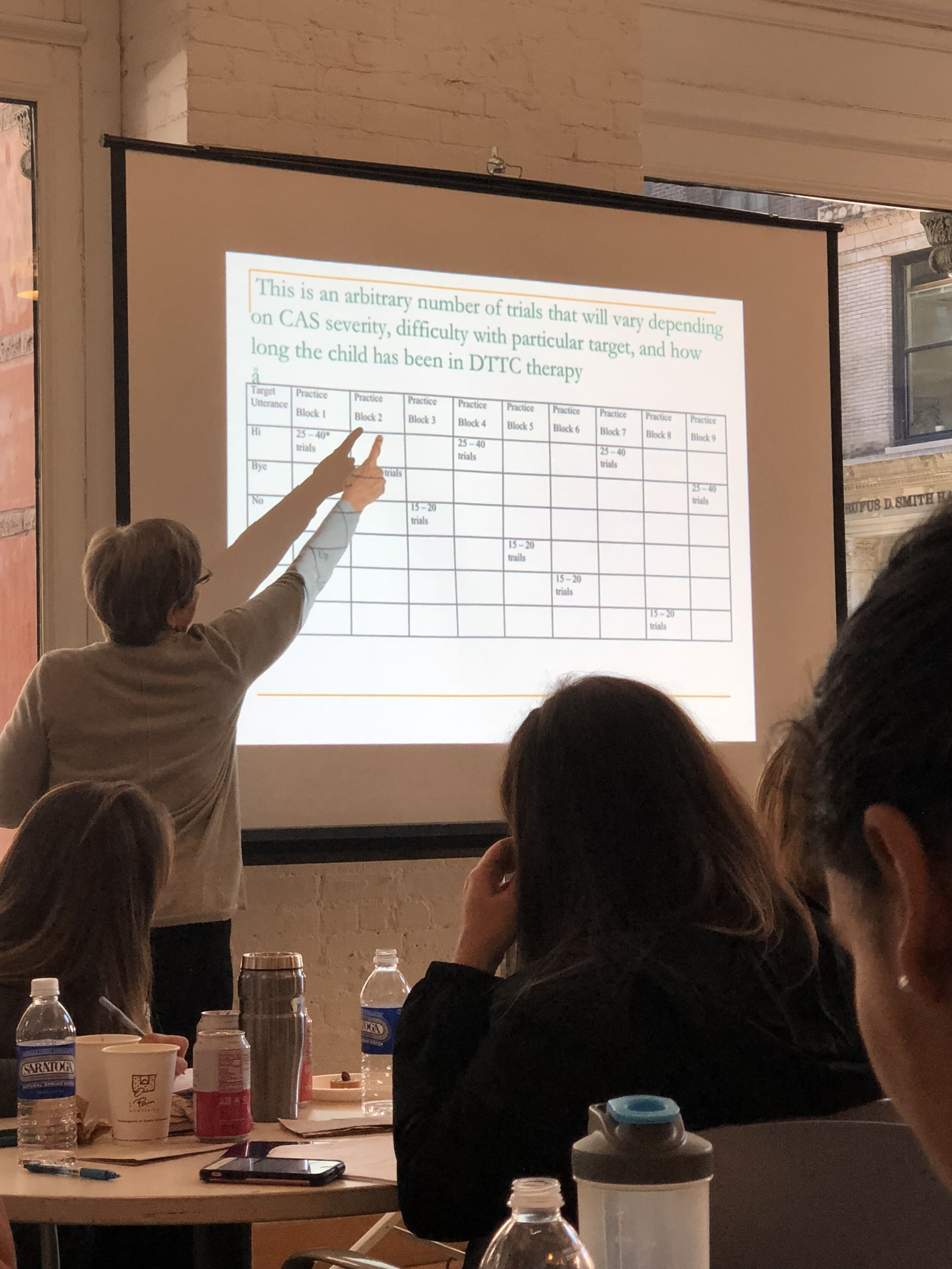Feeling Unprepared to Treat CAS Clients? You're Not Alone.
When I received an e-mail from my alma mater about a free workshop on the assessment and treatment of Childhood Apraxia of Speech (CAS) - I was ecstatic. Not just because of the word free, but also because I had two particular students in mind who I was struggling with.
Upon clicking the link, I realized there was a lot more prerequisite work than I had ever seen expected from another professional development opportunity. I had to watch about 6 hours of an online video series and take a test with a passing score of 80. I also had to complete required readings before the advanced in-person workshop. (This much work was not even required for the Level 1 PROMPT training I attended last year.)
Here’s the thing though:
It was all so worth it! The online video series sponsored by the Once Upon a Time Foundation is facilitated by Dr. Edythe Strand. Dr. Edythe Strand is the former Head of Division of Speech Pathology, Department of Neurology at the Mayo Clinic, in Minnesota. She is also one of the authors for the forthcoming Dynamic Evaluation of Motor Speech Skill (DEMSS.)
This may seem like a lot of information. What you really need to know is that Dr. Strand is an experienced and knowledgeable expert in the field of motor speech disorders. Upon attending the in-person workshop, I became aware that motor speech disorders are an area that we speech-language pathologists often feel unprepared to treat. This is especially true for those of us that decide to work in educational settings like schools, as opposed to medical settings.
This is not a critique of the institutions that trained us. There is so much information to cover in our field and given the limited amount of time, professors and program administrators have to find ways to expose us to a little bit of everything. Unfortunately, you can only be really good at assessing and treating motor speech disorders the more that you practice it.
As a school-based speech language pathologist, my exposure to children with apraxia of speech has been limited. Upon entering District 75, I have found that exposure increased, but have struggled in both locating and implementing the best strategies.
CAS is often misdiagnosed because of its relatively low incidence. Estimates indicate that CAS occurs approximately 1 - 10 in 1000 children or 3 - 5% of children with speech sound disorders.
If you do nothing else after reading this blog post, I STRONGLY recommend that you check out the online video series. Dr. Strand does a commendable job disseminating the information in a way that is both engaging and effective.
(Did I mention that they count for FREE CEUs!?!?)
It can only help you and your students to take some time out of your schedule to learn more about the current research and evidence-based practice. Click on the link below to learn more about the online course and free advanced training workshops.
https://www.childapraxiatreatment.org/forclinicians.aspx#AdvancedTraining
What I enjoyed most about the online series is that Dr. Strand emphasizes the principles of motor learning for SLP’s to provide the best treatment and get our CAS students to be verbal. She is not pushing her own product. In fact, she often encourages participants to make up their own motor speech exam. Her main focus is that children with CAS have more access to quality, evidence-based assessment and treatment.
The two-day advanced in-person workshop includes demonstrations of treatment techniques, videos, case studies, and treatment planning/goal writing activities to help participants improve their clinical skills. (I took advantage by bringing video footage of my CAS student and gained some really valuable feedback about how to move forward with treatment.)
I am especially grateful to the Once Upon a Time Foundation for their philanthropic efforts to help make quality therapy available for all students diagnosed with CAS. I’ve already started implementing new approaches like probe testing and DTTC into my treatment practice and am looking forward to seeing the results.
Be sure to drop a comment down below if you decide to engage in this professional development opportunity. Happy learning!


